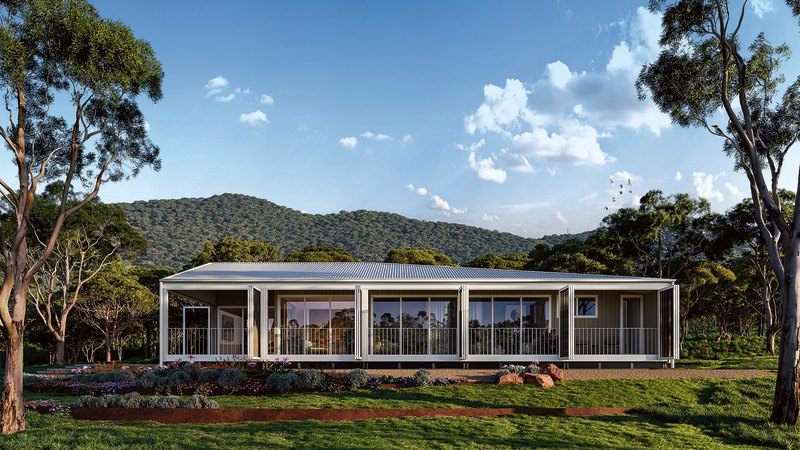
Extreme weather has long been a feature of life in Australia, but you’d never know it the way most Australian homes are designed. Derided by many as “glorified tents”, critics complain that lax standards have created homes that are too cold in winter, too hot in summer and unprepared for natural disasters. “People used to contact us for help rebuilding after disasters, but now the focus is shifting to more proactive advice-seeking,” says Kate Cotter, chief executive of the Resilient Building Council.
“There’s a shift in how we think about things, including more long-term thinking.” Fortis’ Conjola house design features general resilience to extreme weather and disasters including bushfire sites. Credit: Fortis The Resilient Building Council helped create the FORTIS House project, a set of designs and principles for resilient homes (like that pictured above) which are freely available online, co-created with affected communities in the wake of 2019/20’s Black Summer.

“Time matters, so it’s important people have good solutions available before disaster happens.” As climate change creates hotter summers, building climate-resilient homes is not just an issue for people living in areas prone to natural disasters. For anybody building a new home, orientation is a good – and easy – place to start.
The ideal orientation is “true” solar north, which differs to the magnetic north of a compass, says Kelvin Wicks, a researcher with think tank Beyond Zero Emissions. “Good design is something you will never regret,” he says. “It’s cheaper to get it right at the outset, than retrofit down the line.
Research also indicates that a more energy-efficient home will attract higher sale prices. It’s a worthwhile investment.” One of the best things that home owners can do is block sunlight from hitting windows, Wicks says.
“It’s a relatively simple thing to figure out during the summer; just stand outside in the morning, at lunchtime and in the afternoon, and see if the sun’s hitting your windows. “You can figure out where the shading should go. Ideally, it’s external shading.
” Keeping in the cool ...
workers installing insulation on a roof. Credit: Bloomberg The second piece of the puzzle is insulation. “Ideally, I would be putting both shading and appropriate insulation in.
If you’re running an air-conditioner, insulation is ultimately what’s going to keep the cool in, as well as the heat out.” While it can seem like an expensive or even overwhelming process to retrofit a home, Wicks says a good approach is to start small. “Even if you started off with some shading solutions, putting ceiling insulation in and then install just one air-conditioner in the living room – that’s a pretty affordable place to start.
” Not everybody can make structural changes to their homes. Renters, in particular, can be forced to put up with uncomfortable living environments. “When I was a renter, one of the biggest things I did during summer was keep curtains and blinds closed at the start of the day,” Wicks says.
“Keeping doors closed throughout the house can make a big difference too, so heat isn’t able to easily move throughout the home. “Beyond that, I recommend advocating. We need to improve the standards of our housing stock across the board.
” Get the orientation right. If you’re building a new home, a “true” solar-north orientation is ideal. It’s different to magnetic north – you can find tools online illustrating the difference.
Start small. You can focus on just getting one zone of the house right first, or make one upgrade at a time: you might install external shading on west-facing windows one year, then add ceiling insulation the next. Harness natural cycles.
Deciduous shading over a pergola will keep the sun at bay over summer, before leaves fall and let the sunshine in over winter. Consider green financing. Some banks offer clean energy home loans to fund the installation of solar panels, window glazing, insulation and more.
Understand your extreme weather risk. The SES and RFS have guides to preparing for storms and fires respectively and Coastal Risk Australia’s online maps show projected sea-level changes. Get online.
The federal government’s yourhome.gov.au website is full of helpful advice, as are Facebook groups – “My efficient electric home” has over 120,000 members.
Get engaged. Advocacy group Better Renting runs a “Healthy Homes for Renters” campaign, calling for minimum energy efficiency standards for rental properties..














